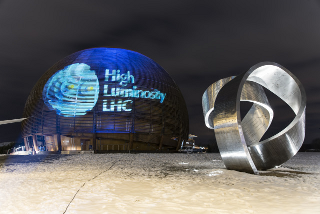In this talk, the second in CERN’s International Year of Light series, senior CERN scientist, Amalia Ballarino explains the potential of superconductivity for accelerators and for society.
Superconductivity was discovered just over 100 years ago. It refers to certain materials that change their properties when cooled to, normally, below 20 K (- 253.15°C) to offer no resistance to the passage of electrical current.
Particle physics has been a major driving force in developing superconductivity, and, here at CERN, the magnets of the Large Hadron Collider use superconducting coils to allow high currents to flow without losing any energy to electrical resistance. The material Niobium-Titanium is the workhorse for accelerators, as well as MRI scanners and fusion systems, and research is ongoing for Niobium-Tin superconductors in high field magnets.
Most applications are based on low temperature superconducting materials, needing large cryogenic systems to keep them cold. With the discovery of High Temperature Superconductivity, a new class of materials emerged that could offer solutions to fundamental challenges of the 21st century such as global energy production, storage, and distribution.
Choose timezone
Your profile timezone:
